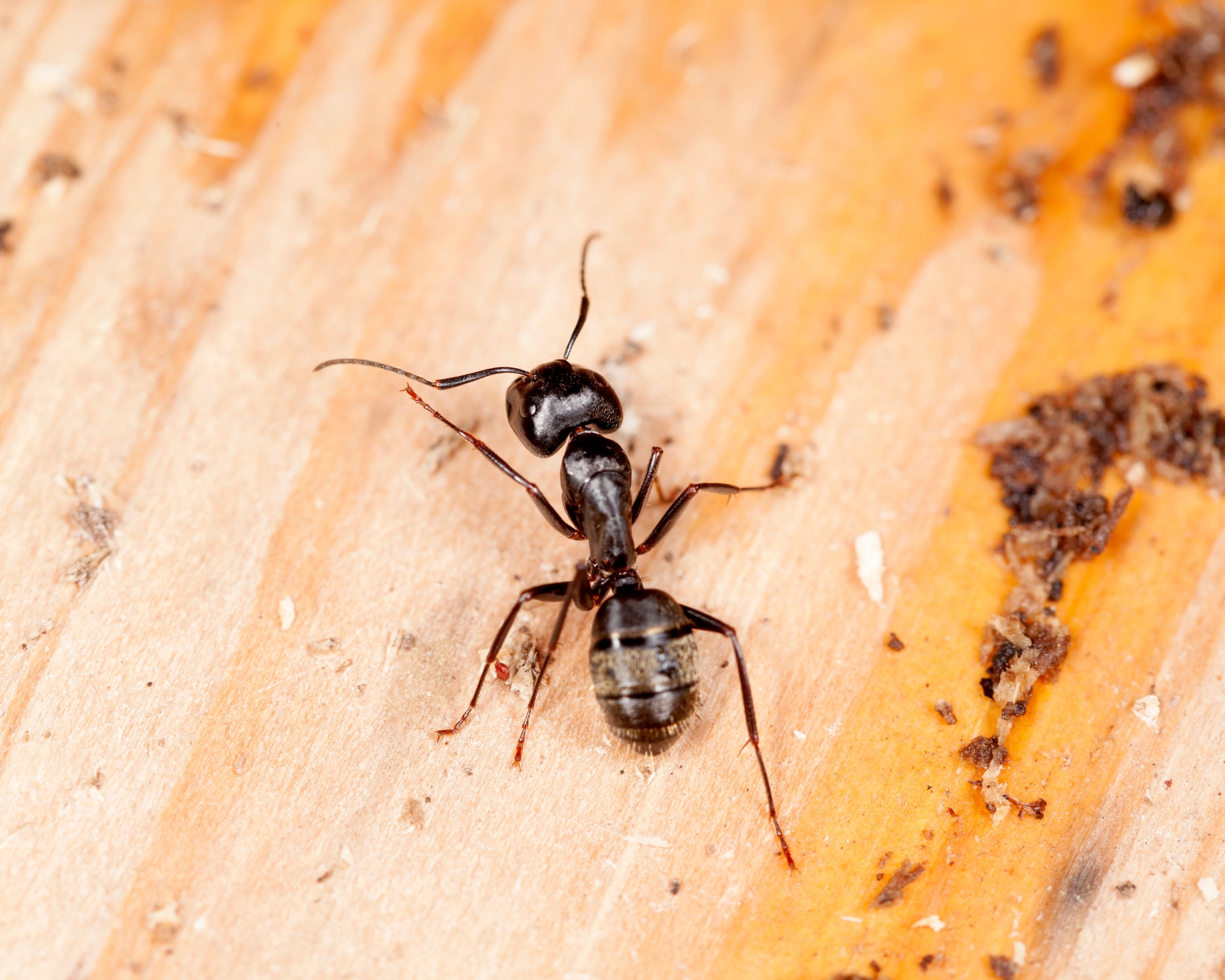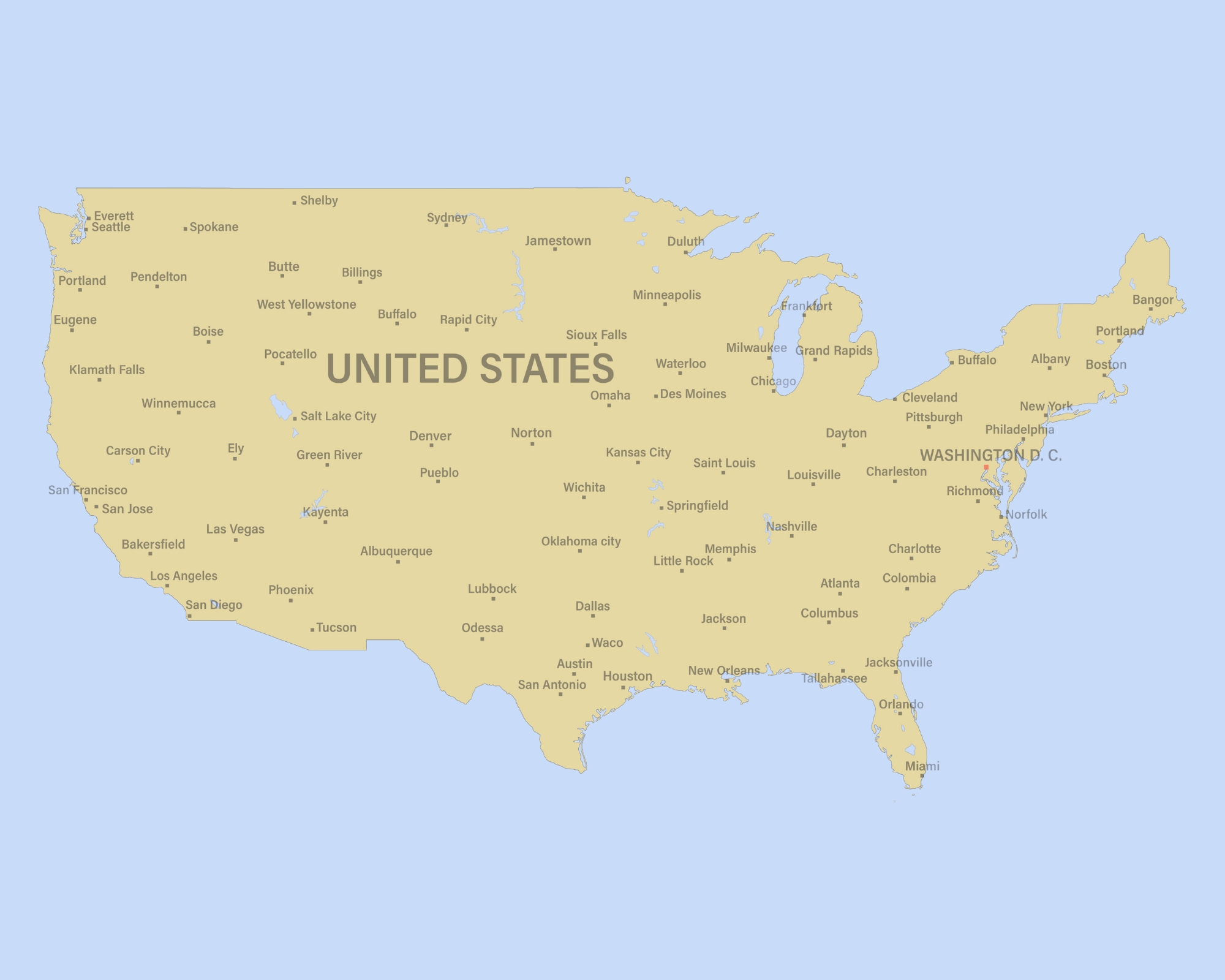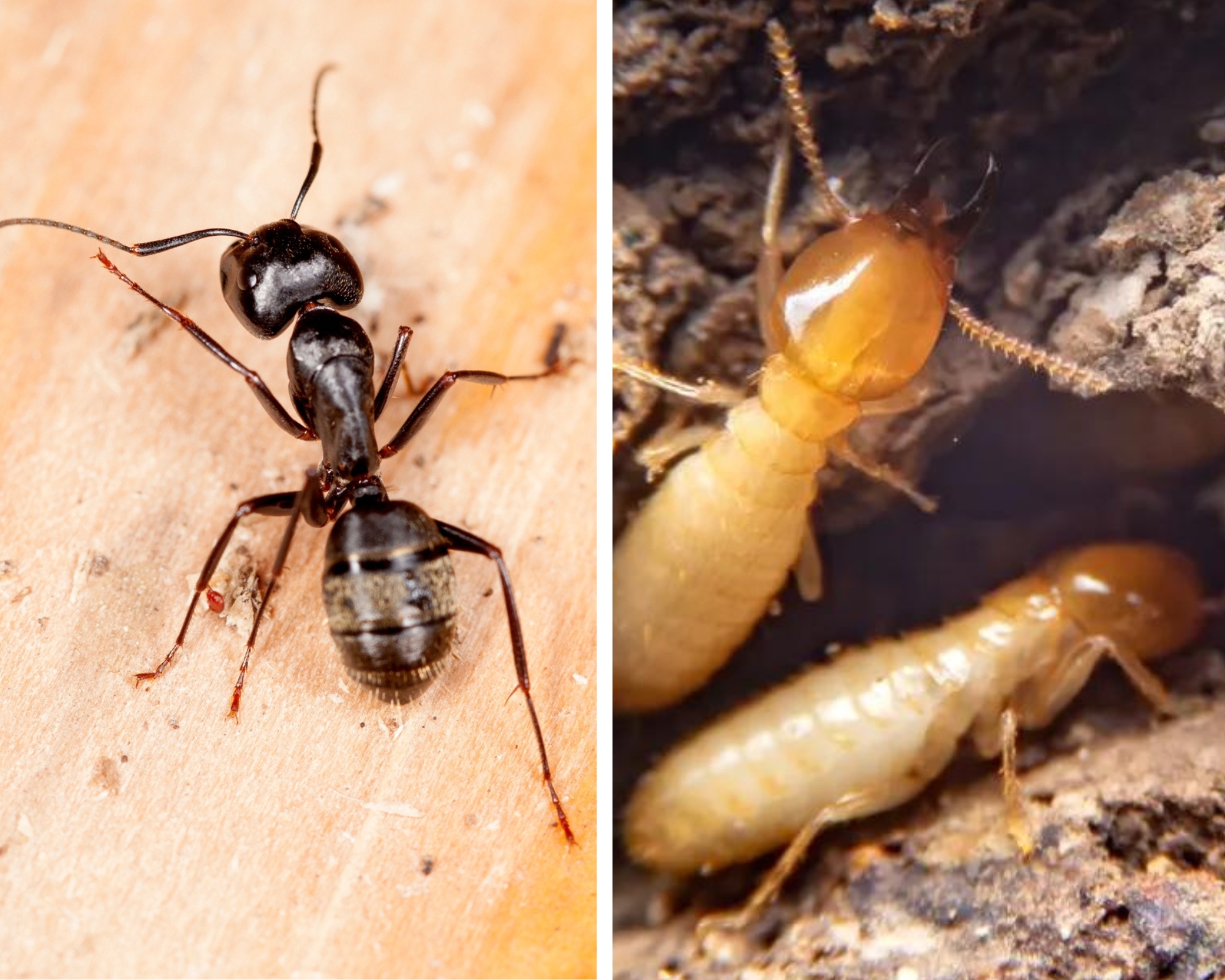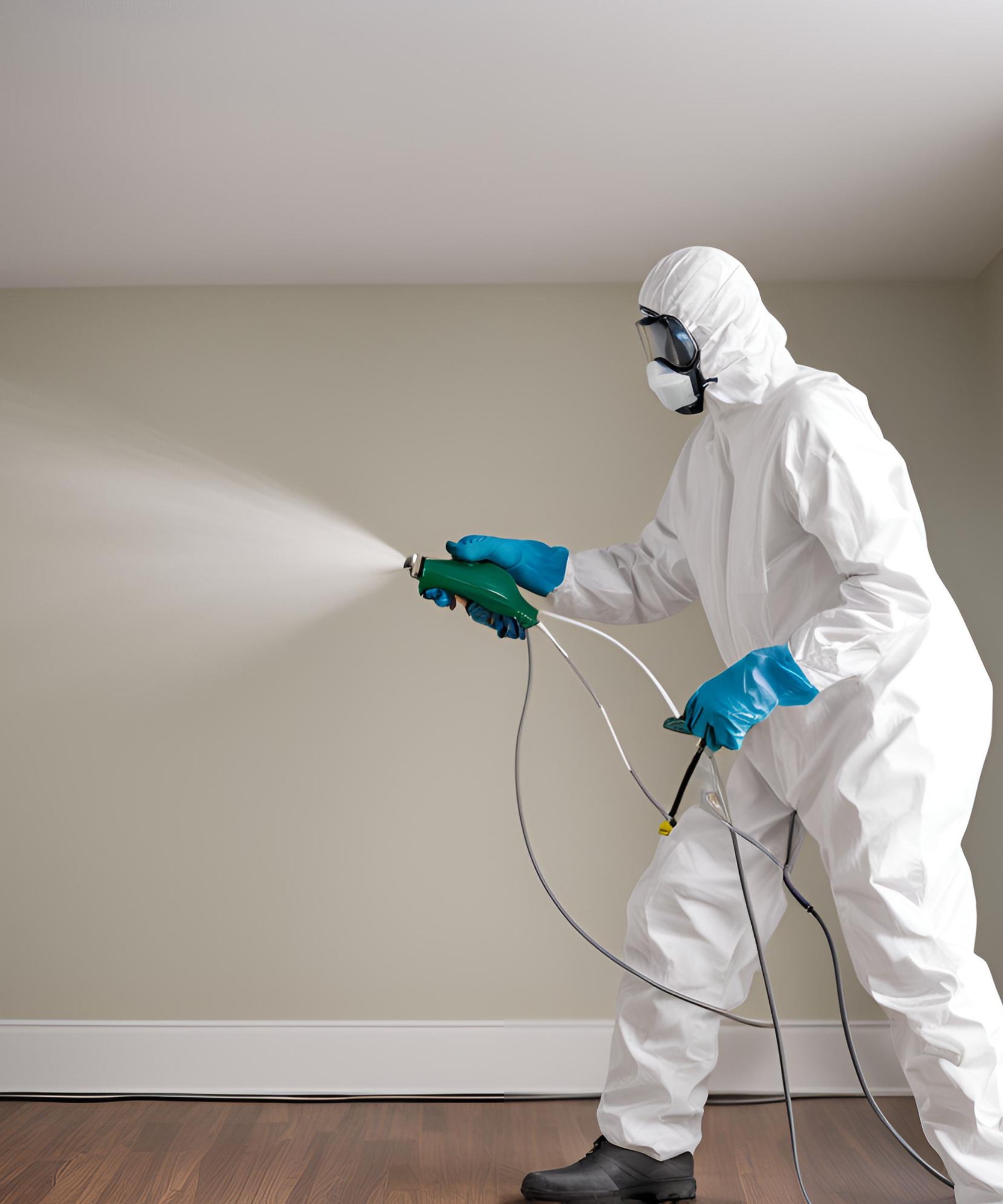
Carpenter ants tunnel their way through wood and can cause enormous structural damage if infestations go on unnoticed or untreated. Plus, their digging makes a sound that will send your ick-factor through the roof if the colony is in your walls.
Our pest control and insect experts reveal everything you need to know about these insects, how they differ from regular ants and termites, and how best to get rid of carpenter ant infestations.
If you've delved into our guide on how to identify pests and know carpenter ants are the unwelcome house guest you're dealing with, let's get on with banishing these wood-destroying ants from your home.
Everything you need to know about carpenter ants and home infestations
Unlike regular ants you banish from a kitchen, carpenter ants are rarely out and about, instead making their homes in a series of tunnels and nests inside wooden structures.
Our pest control expert-led guide on carpenter ants covers everything you need to know about having an infestation of these insects in your home, and what to do about it.
What are carpenter ants?

One of the largest ants of the species, carpenter ants can grow up to an inch long, and have large mandibles, which, as Juan Cava, president of pest control company GOTBUGZIKILL, says, makes carpenter ants "literally chewing machines."
He explains, “Carpenter ants are large ants known for their wood-destroying habits and can cause significant damage to homes. Unlike termites, carpenter ants do not eat wood. Instead, they excavate it to create smooth tunnels and galleries for nesting."
Juan, who regularly deals with these infestations explains that black carpenter ant colonies are moderate in size, usually containing over 3,000 workers (up to 10-15,000 including satellite nests) when maturity is reached in about three to six years.
"The typical black western carpenter ant mature colony contains about 10-20,000 workers, with large colonies of more than 50,000 workers," Juan adds. "Colonies can have multiple queens and huge colonies of over 100,000 workers.”
Unlike getting rid of ants, carpenter ant removal is much more involved and usually requires a professional pest control solution.
Common carpenter ant species in the USA

The black carpenter ant (Camponotus pennsylvanicus) is common in the eastern United States, while the western black carpenter ant species (Camponotus modoc and Camponotus vicinus) are found in the west.
Juan adds, "In Hawaii, the serious pest is the Hawaiian carpenter ant, Camponotus variegattus, a species introduced from southeastern Asia. In Florida, the two most common carpenter ants around structures are Buckley, Camponotus floridanus, and the Emery, Camponotus tortuganus."
He continues, "Unlike the other species across the USA, these ants only seek either existing voids in which to nest or excavate soft wood that have been damaged by wood rot."
Knowing which one you're dealing with will help exterminate them more effectively.
The difference between carpenter, regular ants and termites

The main difference between carpenter ants and regular ants is that regular ants come inside the home for several reasons, and do not excavate wood to create nests.
Juan explains, "The second difference is that carpenter ants are usually active after dusk and they are much larger than the common household infesting ants. Termites, on the other hand, consume wood as part of their diet."
What carpenter ants can do or damage in your home
Juan explains that carpenter ants prefer to establish their first nest in moist, decayed wood, and later expand into sound wood as the colony grows. Inside the home, their nests are usually located in wood, insulation, and wall voids.
He says, "Carpenter ants are opportunistic and come inside for shelter and moisture, and usually have satellite colonies. The main colony may be outdoors somewhere, but they create satellite nest indoors near resources."
When the colony grows, and extends into internal structures such as your home, you may see foraging activity inside. Sometimes a home could have a nest and the homeowner won't know about it because they stay inside the walls and forage outside at night.
"Outside, nests are typically found in rotting fence posts, stumps, old firewood, and dead portions of standing trees," Juan explains.
Untreated carpenter ant infestations can also lead to significant structural damage over time as they expand their nesting sites as the size of their colony grows, bringing more extensive tunneling and causing the weakening of wood.
Where are carpenter ant infestations found?

Carpenter ants are typically found in areas with high moisture levels, with common locations including near water sources in kitchens, bathrooms and basements, nesting in wooden structures, insulation, or voids in walls.
Outdoors, you may find carpenter ants in decaying tree stumps, piles of firewood, garden structures, or even wooden fencing.
How to spot a carpenter ant infestation in or around your home

Whilst these ants venture out of their nests at night to forage, you may spot other more subtle signs:
- Frass: A sawdust-like material ejected from their tunnels.
- Visible ants: Large ants foraging indoors, especially at night.
- Rustling sounds: Noises coming from within walls or wooden structures.
- Hollow sounding wood: Tapping on wood may reveal hollow sections due to the ants tunneling.
"Untreated carpenter ant infestations can lead to significant structural damage," says Juan. "As the colony grows, they expand their nesting sites, causing more extensive tunneling and weakening of wood. Over time, this can compromise the integrity of wooden structures, leading to costly repairs and potential safety hazards."
How to get rid of carpenter ant infestations inside the home

The advice from our pest control expert is clear. "Homemade solutions for carpenter ants do not work," Juan says. "This is a serious problem and should be handled by an experienced pest control professional."
Knowing what to expect from a pest control expert that visits your home to deal with carpenter ants will help you identify the high-quality ones from the most inexperienced.
Juan advises the first step to eliminating carpenter ants is to locate the nest.
"Because carpenter ants are nocturnal, the pest management technician may have to do the inspection when the sun goes down, or ask the homeowner to walk the property with a flashlight." He continues, "From here, they can find signs of foraging ants or evidence of frass as a sign of carpenter ant activity."
If the colony is nesting inside the wall, homeowners may hear rustling noises from within. Noting where is important for helping pest control professionals pinpoint their treatment efforts.
Juan recalls a recent carpenter ant infestation he recently exterminated. "A customer I helped recently was hearing them inside the wall and couldn't sleep. The pest control company that she had initially contacted was only spraying the baseboards which is ineffective. She'd wrongly been told it was some sort of gnat problem. That company came in to my client's home four times and failed to resolve the problem."
Instead, Juan took a different tack to treat the infestation, drilling holes in the wall and hitting the nest with insecticidal dust.
He adds, "Carpenter ants are one of the most difficult pests to eliminate and it is a bit of a detective job. Sometimes we get lucky and in the first treatment we hit the nest and kill the entire colony. But other times we have to do multiple follow ups until the infestation is resolved.
"When carpenter ants are nesting in the walls, a repellent insecticide dust such as Delta Dust (available on Amazon), will kill any ants inside the wall voids. To apply the dust in the wall void we can do it through the electrical outlets or through gaps in the plumbing lines, but many times we need to drill the walls."
Delta Dust is a pyrethroid, a neurotoxin that fatally disrupt an insect's nervous system. It is not harmful to humans if used in the home as per the manufacturer's instructions and can be used on a host of pest problems including getting rid of: bed bugs, cockroaches in kitchens, crickets, fleas, fire brats, silverfish, termites, carpenter bees, centipedes, ground beetles, millipedes, scorpions, spiders, sowbugs, wasps, bees, clothes moths, carpet beetles, pantry pests, plant pests, slugs, and ticks.
How to get rid of outdoor carpenter ant infestations
For the exterior of the home the pest control, professionals should spray the foundation with a non-repellent insecticide such as Termidor Foam, available on Amazon, which rapidly expands and immediately wipes out pests.
Juan says, "The base of trees, fence posts, and utility posts should be treated. One of the best non-repellent insecticides is Termidor. This product has fipronil as the active ingredient and it is one of the best products to kill ants and termites."
The use of bait for carpenter ants can also help but expertise is needed to know which type of bait to use in which season.
"Solid granular baits are protein and fat based, while gel baits are sugary and carbohydrate-based. Ants have different nutritional needs throughout the year so we have to use the right bait at the right time of the year so there is high acceptance," he says.
Juan is clear that homemade solutions for carpenter ants do not work. "This is a serious problem and should be handled by an experienced pest control professional," he insists.
In the meantime, be cautious about how you use insecticides.
"Certain insecticides work as a repellent and can create a barrier, which can be an issue," Juan explains. "For ants, it's best to use non-repellent insecticides such as Termidor along the foundation.
"The problem with repellent sprays like Bifenthrin (such as a Bifenthrin Insecticide Concentrate available on Amazon) is that if the ants are already nesting inside the house, you may locked them in and have a bigger problem."
Meet our expert
Learn about common pest control mistakes you can avoid right now to avert a potential infestation in your home before it even begins, as well as the things that repel bugs in the first place.







